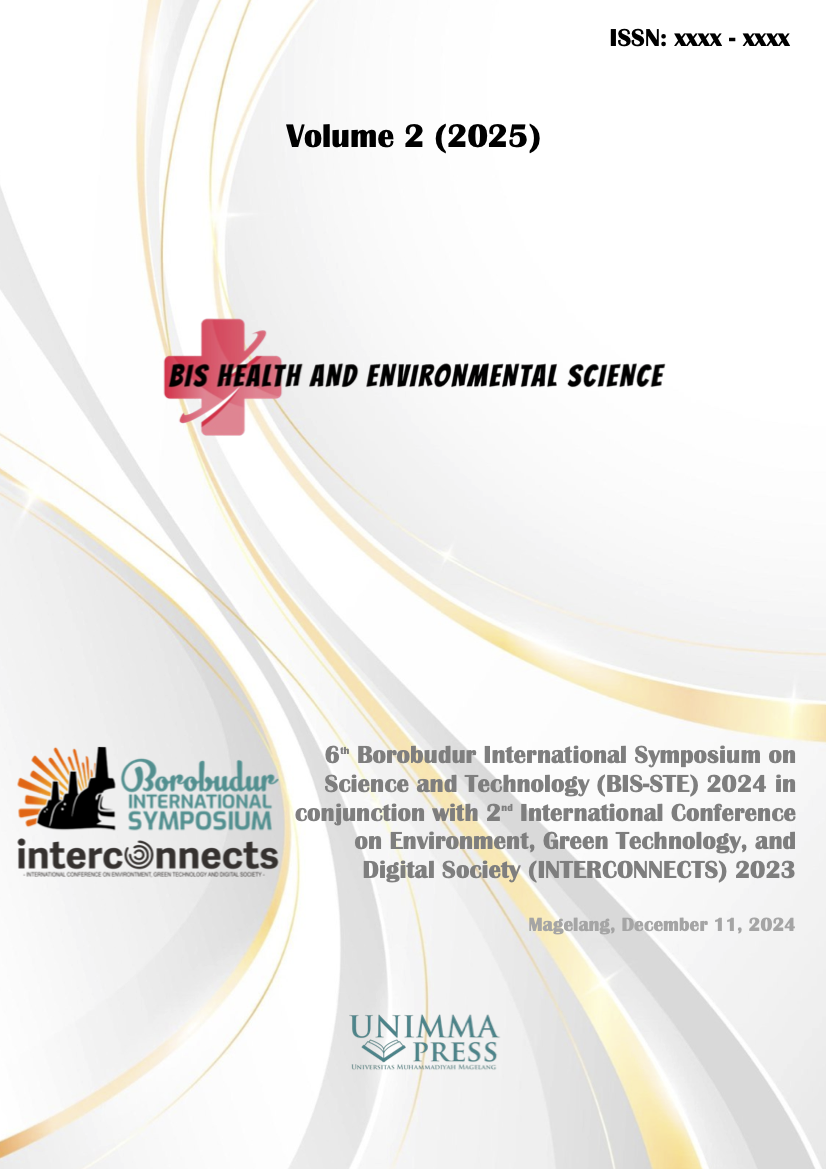Ergonomic risk analysis with environmental interventions to reduce occupational diseases
Keywords:
Environment, Ergonomic risk, Fatigue, Heart rateAbstract
Most small industries still rely on human labour as workers. The use of human labour requires special attention with regard to the risk of occupational diseases. Risks at work can arise from human, environmental and external factors. It has been observed that some manual jobs require energy beyond the worker's capabilities, a working environment that is not conducive and uncomfortable work equipment. Discomfort at work can cause workers to tire quickly. The risks associated with these working conditions can lead to long-term health problems. The aim of this research is to identify the human factors and work environment factors that can lead to occupational health risks. The approach used in this research is the ergonomic risk influenced by work environment factors to reduce the level of fatigue at work. The method used is REBA to identify postures that are not ergonomic due to the work environment and heart rate measurement to assess the level of worker fatigue. The research results show that the F-value < F-table is 1.23 < 3.478, which means that there is a significant relationship between temperature, noise, humidity and lighting on the level of fatigue experienced by workers. The Pearson correlation test confirmed a positive relationship between REBA scores and heart rate, showing that the worse the posture, the higher the level of physical fatigue experienced by workers.
References
[1] Keadaan Angkatan Kerja di Indonesia Februari 2023, diakses pada laman web: https://www.bps.go.id/id/publication/2023/06/09/5ce5c75f3ffabce2d6423c4a/keadaan-angkatan-kerja-di-indonesia-februari-2023.html tanggal 11 Oktober 2024.
[2] Peraturan Menteri Ketenagakerjaan RI Nomor 5 Tahun 2018 tentang Keselamatan dan Kesehatan Kerja Lingkungan Kerja. Diakses tanggal 11 Oktober 2024 pada laman web: https://temank3.kemnaker.go.id/page/perundangan_detail/8/01be2bc7a2c52ffe68b7b885e4761972
[3] Adytra, L., dan Ramdhan, D. H. (2023). Faktor-faktor Yang Berhubungan Dengan Kelelahan Pekerja di PT X di Jabodetabek. Jurnal Cahaya Mandalika, 3 (2), 720-727. e-ISSN: 2721-4796, https://doi.org/10.36312/jcm.v3i2.
[4] Susanti, F. (2015). Analisis Postur Kerja sebagai Upaya Mengurangi Risiko Musculoskeletal Disorders pada Karyawan Bagian Gudang Non Medis Rumah Sakit Kasih Ibu Surakarta
[5] Enhancing Workplace Safety with Ergonomic Assessments Using REBA and RULA Powered by Computer Vision Technology. diakses pada tanggal 9 Oktober 2024 di laman web: https://www.viact.ai/post/enhancing-workplace-safety-with-ergonomic-assessments-using-reba-and-rula-powered-by-computer-vision#:~:text=REBA%20can%20be%20used%20to,reduce%20the%20risk%20of%20injury
[6] Institut Nasional untuk Keselamatan dan Kesehatan Kerja (NIOSH). diakses pada tanggal 9 Oktober 2024 di laman web: https://www.cdc.gov/niosh/ergonomics/ergo-programs/risk-factors.html
[7] Chakravarti I.M, Laha R.G, Roy J. (1967). Handbook of Methods of Applieed Statistics. Volume I.John Wiley and son.
[8] W. O. A. Septiana and M. M. A. Sholeh, “Pengaruh Motivasi Belajar terhadap Kemandirian Belajar Siswa Kelas Xi SMA Islam Sultan Agung 1 Semarang pada Mata Pelajaran Fiqih selama Masa Pandemi Covid-19,” Sultan Agung Fundam. Res. J., vol. 2, no. 1, pp. 33–40, 2021, [Online]. Available: http://jurnal.unissula.ac.id/index.php/safrj/article/view/13582.
[9] Usmadi, U. (2020). Pengujian Persyaratan Analisis (Uji Homogenitas Dan Uji Normalitas). Inovasi Pendidikan, 7(1), 50–62. https://doi.org/10.31869/ip.v7i1.2281
[10] Astrand, P., & Rodahl, K., (1986). Textbook of work physiology: Physiological based of exercise, McGraw-Hill, New York.
[10] Artayasa, I. N. (2008). Pendekatan Ergonomi Total Meningkatkan Kualitas Hidup Pekerja Wanita Pengangkut Kelapa di Banjar Semaja Antosari Selemadeg Tabanan Bali. Indonesia Journal of Biomedical Science, 2(2).
[11] Bautmans, I., Gorus, E., Njemini, R., & Mets, T, (2007). Handgrip performance in relation to self-perceived fatigue, physical functioning and circulating IL-6 in elderly persons without inflammation, BMC Geriatrics. 7 (2007) 5.
[12] Yassierli, Yassierli, Dwina Oktoviona, and Inayati Ulin Naâ, (2016). "Hubungan antara Indikator Pengukuran Kelelahan Kerja dan Metode Cepat Penilaian Risiko Ergonomi." Ergonomi dan K3 1.1.
[13] Kusuma, I. F., Hartanti, R. I., & Hasan, M. (2014). Pengaruh posisi kerja terhadap kejadian low back pain pada pekerja di Kampung Sepatu, Kelurahan Miji, Kecamatan Prajurit Kulon, Kota Mojokerto. Jurnal Ilmu Kesehatan Masyarakat, 10(1).
Downloads
Published
Conference Proceedings Volume
Section
License
Copyright (c) 2025 Isana Arum Primasari, Suranto Suranto, Susy Susmantini, Selfi Handayani (Author)

This work is licensed under a Creative Commons Attribution-NonCommercial 4.0 International License.

